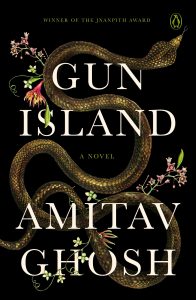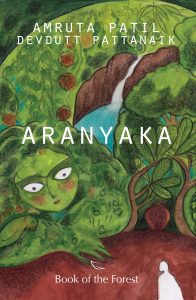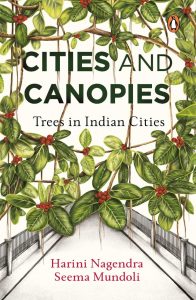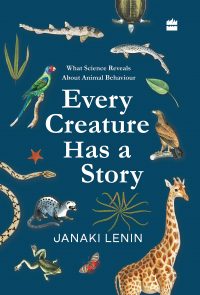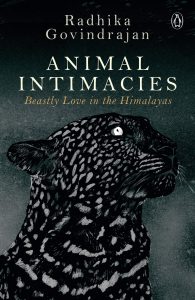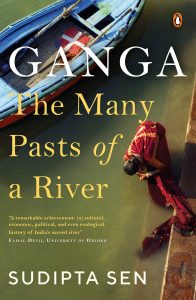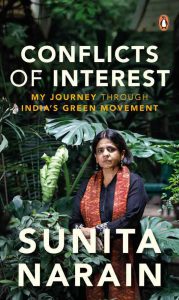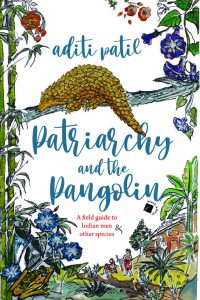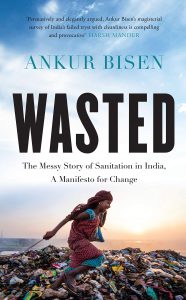Literature plays myriad roles in our lives. It deepens our understanding, pushes us to reflect, helps us mind-travel, offers solutions, emboldens the inner empath and more.
Literature on the environment, be it fiction or nonfiction, prose or poetry, has the power to connect us to nature in all these ways. It can open the door to climate consciousness in a manner that becomes a way of life.
With our Honour List of Green Literature for Adults, we hope to bring mind-opening and heart-warming reads so your bookshelf doesn’t miss any important greens!
Nomination Process:
For the inaugural edition, GLF has looked at all books with a green theme (non-fiction, fiction as well as graphic novels) published in 2019 and 2020 for the general category, except academic books, self-help/how-to books or guides, and books of poetry.
Rather than nominations of just a few select books of green literature, we invited publishers to send their entire list of environment and nature-related books published during the aforementioned duration, and also included books that were self published for the initial list.
*Books by foreign authors have not been considered; only Indian authors are eligible.
Watch this space for the announcement of our Longlist and Shortlist.
The Honour Books will be selected based on jury as well as popular rating. The criteria looked at are: originality, style of writing and ease of reading, how futuristic the book is and it’s potential to be a game-changer, major influencer and/or inspiring to readers. The Honour Books and Awards for this category will be announced by our jury on December 9, 2021.
Don’t miss it!
Longlist of General Fiction & Non-Fiction
Gun Island by Amitav Ghosh | Publisher – Penguin Hamish Hamilton
Bundook. Gun. A common word, but one which turns Deen Datta’s world upside down.
A dealer of rare books, Deen is used to a quiet life spent indoors, but as his once-solid beliefs begin to shift, he is forced to set out on an extraordinary journey; one that takes him from India to Los Angeles and Venice via a tangled route through the memories and experiences of those he meets along the way. There is Piya, a fellow Bengali-American who sets his journey in motion; Tipu, an entrepreneurial young man who opens Deen’s eyes to the realities of growing up in today’s world; Rafi, with his desperate attempt to help someone in need; and Cinta, an old friend who provides the missing link in the story they are all a part of. It is a journey which will upend everything he thought he knew about himself, about the Bengali legends of his childhood and about the world around him.
Gun Island is a beautifully realised novel which effortlessly spans space and time. It is the story of a world on the brink, of increasing displacement and unstoppable transition. But it is also a story of hope, of a man whose faith in the world and the future is restored by two remarkable women.
Aranyaka: Book of the Forest by Amruta Patil and Devdutt Pattanaik I Publisher – Westland
In the wilderness of humanity, In the forests of the mind, Who eats whom? Who sees whom?
Aranyaka is about the great forests within us, and without. It is about food, feeding and love. Braiding the stories of three spirited rishikas—Katyayani the Large, Maitreyi the Fig and Gargi the Weaver—it explores the fears and hungers that underpin all human interactions.
Cities and Canopies: Trees in Indian Cities by Harini Nagendra & Seema Mundoli I Publisher – Penguin RH
Native and imported, sacred and ordinary, culinary and floral, favourites of various kings and commoners over the centuries, trees are the most visible signs of nature in cities, fundamentally shaping their identities. Trees are storehouses of the complex origins and histories of city growth, coming as they do from different parts of the world, brought in by various local and colonial rulers. From the tree planted by Sarojini Naidu at Dehradun’s clock tower to those planted by Sher Shah Suri and Jahangir on Grand Trunk Road, trees in India have served, above all, as memory keepers. They are our roots: their trunks our pillars, their bark our texture, and their branches our shade. Trees are nature’s own museums.
Drawing on extensive research, Cities and Canopies is a book about both the specific and the general aspects of these gentle life-giving creatures.
Every Creature Has a Story: What Science Reveals about Animal Behaviour by Janaki Lenin I Harper Collins
We are surrounded by an astounding variety of lifeforms. Over millennia, they have evolved to exploit unique niches, in the process developing features and skills that set them apart. Have you ever wondered what price the giraffe pays for its long neck? The neck increases its blood pressure to pump blood up to its brain, which endangers its life every time it bends down to drink. Or have you thought about how female nightingales decide which male will share the burdens of parenthood with them? They listen to prospective candidates’ songs to gauge if they’d make good fathers. And did you know that glass frogs pee on their eggs and the gender of bearded dragons is fixed by sex chromosomes or temperature? In Every Creature Has a Story, Janaki Lenin draws us towards the wonders of the natural world in evocative and witty words. She uncovers the surprising, sometimes bizarre but always amazing ways in which creatures breed and survive, from spiders salivating during sex and snails entombing their parasites into their shells to elephants developing immunity to cancer. After reading this book, you’ll never look at nature in the same way again.
Animal Intimacies: Beastly Love in the Himalayas by Radhika Govindrajan I Publisher – Penguin RH
What do we really know of the intimate-and intense-moments of care, kinship, violence, politics, indifference and desire that occur between human and non-human animals?
Built on extensive ethnographic fieldwork in the mountain villages of India’s Central Himalayas, Radhika Govindrajan’s book explores the number of ways that human and animal interact to cultivate relationships as interconnected, related beings. Whether it is through the study of the affect and ethics of ritual animal sacrifice, analysis of the right-wing political project of cow protection, or examination of villagers’ talk about bears who abduct women and have sex with them, Govindrajan illustrates that multispecies relatedness relies on both difference and ineffable affinity between animals.
Ganga: The Many Pasts of a River by Sudipta Sen I Publisher – Penguin RH
The Ganga enjoys a special place in the hearts of millions. In this unprecedented work, historian Sudipta Sen tells the fascinating story of the world’s third-largest river from prehistoric times to the present.
Sen begins his chronicle with the river’s first settlers, its myths of origin in Hinduism and its significance in popular Buddhism. He traces the communities that arose on its banks, the merchants that navigated its waters and the many empires that shaped the river’s identity. Seamlessly weaving together geography, ecology and religious history, this lavishly illustrated volume paints a remarkable portrait of India’s most sacred and beloved river.
Conflicts Of Interest: My Journey Through India’s Green Movement by Sunita Narain I Publisher – Penguin Viking
India’s foremost environmentalist, Sunita Narain, gives a personal account of her battles as part of the country’s green movement. While outlining the enormous environmental challenges that India faces today, Narain talks about how corporate lobbies and political interests often scuttle their effective resolution. She recounts some widely reported controversies triggered by research undertaken by her along with her team at the Centre for Science and Environment, such as a report on pesticides in colas, and a study on air pollution in Delhi, and includes a ringside view of global climate change negotiations. Conflicts of Interest also includes an ‘environmental manifesto’, a blueprint for the direction India must take if it is to deal with the exigencies of climate change and environmental degradation.
Patriarchy and the Pangolin by Aditi Patil I Publisher – Hachette
When two young women are hired to carry out conservation research, they discover that India is a large jungle – larger than they ever imagined. Their study of trees reveals a complex world in which the greatest threat to pangolins and imperilled species is Indian men and patriarchy.
Tramping across North India, the women encounter men, man-made obstacles, and bureaucratic corruption, but forge ahead with satire and self-deprecating humour. Their many stories give us the voices of people and species oppressed or marginalised. Several anecdotes show daily battles against research methods and policies that bury lived life in dry data.
Environmental research is more about lives and livelihoods than data, says Aditi Patil. She makes us feel the pulse of life hidden by statistics. Women farmers, forest dwellers, rustics, and researchers come exquisitely alive in this entertaining and persuasive book.
The Wild Heart of India: Nature in the City, the Country, and the Wild by TR Shankar Raman I Publisher – Oxford University Press
“Wild—untamed, hostile, remote. Yet, wild can be gentle, welcoming, and inspiring, too. This is the wild that preoccupies biologist Shankar Raman as he writes about trees and bamboos, hornbills and elephants, leopards and myriad other species. Species found not just out there in far wildernesses—from the Thar desert to the Kalakad rainforests, from Narcondam Island to Namdapha—but amid us, in gardens and cities, in farms, along roadsides. And he writes about the forces that gouge land and disfigure landscapes, rip trees and shred forests, pollute rivers and contaminate the air, slaughter animals along roads and rail tracks—impelling a motivation to care, and to conserve nature.
Through this collection of essays, Shankar Raman attempts to blur, if not dispel, the sharp separation between humans and nature, to lead you to discover that the wild heart of India beats in your chest, too.”
Wasted: The Messy Story of Sanitation in India, a Manifesto for Change by Ankur Bisen I Publisher – Pan Macmillan
Urban India generates close to 3 million trucks of untreated garbage every day. If these were laid end-to-end, one could reach half way to the moon.
The need for attention to sanitation and cleanliness is both urgent and long-term. This book takes an honest look into India’s perpetual struggle with these issues and suggests measures to overcome them. Historically, we have developed into a society with a skewed mindset towards sanitation with our caste system and non-accountability towards sanitation.
Through stories, anecdotes and analysis of events, this book seeks solutions to the current entangled problems of urban planning, governance and legislation, and institutional and human capacity building. Wasted traces interesting relationships between urban planning and dirty cities in India; legislative and governance lacunae and the rising height of open landfills; the informality of waste management methods, and the degrading health of Indian rivers, soil and air.
Arguing that all current solutions of India are extrapolated from these flawed beliefs and structures and are therefore woefully inadequate, Bisen draws a benchmark from clean countries of today. Underlining the need for inclusive human clusters, specificity in legislation, correction of existing social contracts and governance frameworks, creating a formal resource recovery industry in India, and the pursuit of diplomacy around this industry, this book shows how these solutions could lead us towards a brighter future and better social development.

